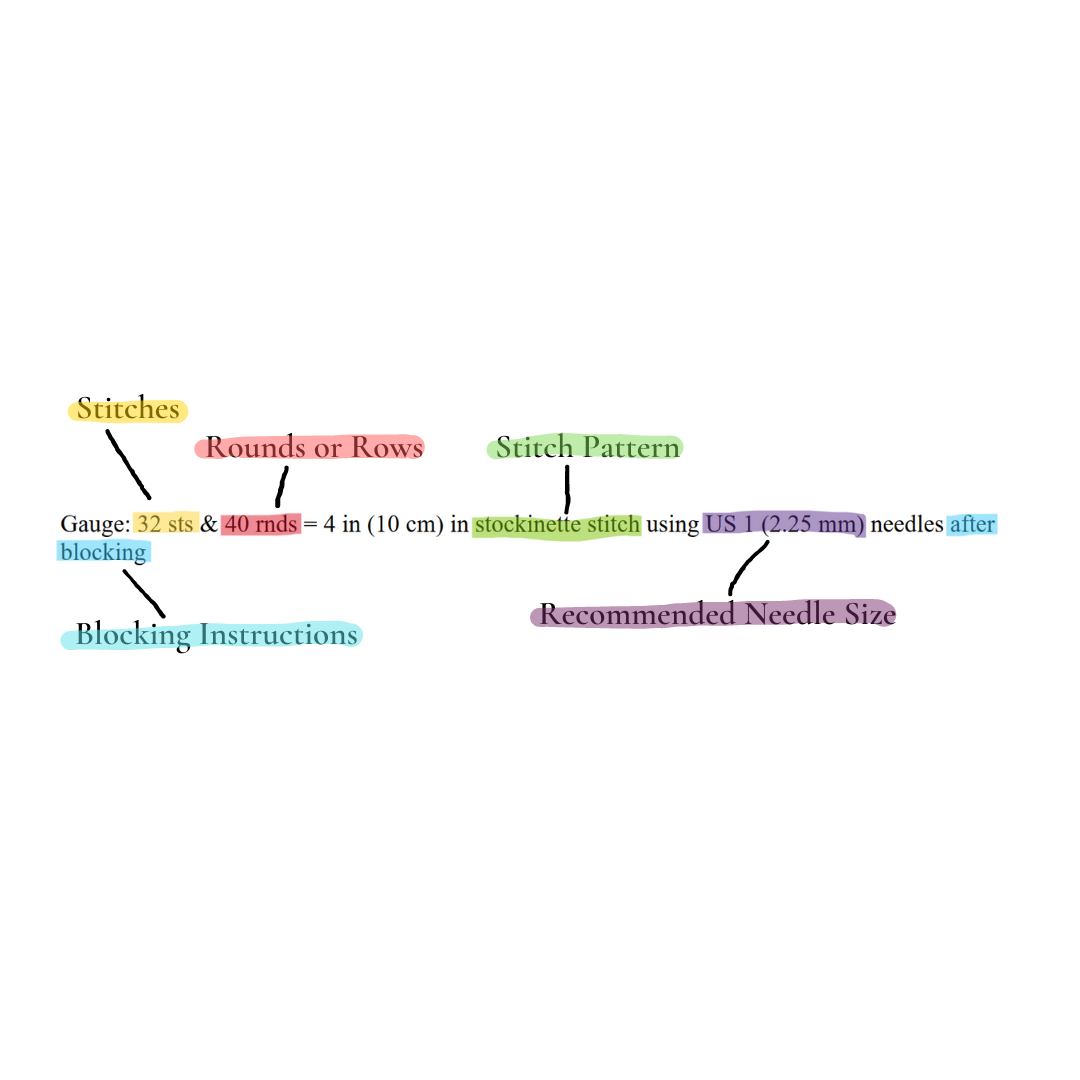Your cart is currently empty!

Gauge: Details to Include in a Pattern
What details should be written in the gauge section of a knitting pattern? I’m going to share with you the details that I verify are included from my tech editing experience.

Hello everyone!
Once upon a time, I designed a knitting pattern. It was a knitting pattern for a pair of mittens.
One day, I sent the pattern to a dear knitter to test knit. Soon after, I received an email from her asking what needle size to work the gauge swatch with. The mitten pattern used 2 different needle sizes, and I hadn’t noted in my gauge instructions which size to use.
I replied letting her know the gauge swatch was knit with the US 7 (4.5 mm) needles.
This incident, combined with my experience helping designers get their patterns ready for publishing through tech editing, has caused me to scrutinize gauge instructions.
What should a knitting pattern’s gauge section include?
Stitches
Likely, this part of a pattern’s gauge will be obvious.
Without this stitch count, it’s close to impossible to compare gauge measurements to the designer’s.
The stitch count is most commonly listed over 4 inches (10 centimeters), but also, 1 inch (2.5 centimeters) is commonly used.
Rows/ Rounds
Depending on the pattern, the number of rows/ rounds per inch can be vital to list.
For example, when a cardigan yoke is worked for a certain number of rows for raglan shaping decreases, a knitter following the pattern with a different row gauge could have an armhole depth that is too deep or too short. This is an example of how important getting gauge can be!
In my opinion, the number of rows/ rounds per inch should always be included.
Like stitches per inch, the row/round count is most commonly listed over 4 inches (10 centimeters), but 1 inch (2.5 centimeters) is also commonly listed.
I want to emphasize the power of the words, rows and rounds.
Rows is the term used for knitting back and forth or flat knitting.
Rounds is the term used for circular knitting or knitting in the round.
More than identifying the direction these stitches are measured, these words should communicate how to knit the gauge swatch.
For those knitting your pattern, list rounds per inch for a gauge swatch to be knit in the round. List rows per inch for gauge swatches to be knit flat.
Stitch Pattern
Since the same pair of needles, yarn, and hands can produce different gauge swatch measurements depending on whether the stitch pattern is stockinette or colorwork, it’s a priority to include what stitch pattern knitters should work up in their gauge swatch.
Blocking Instructions
As the gauge of a swatch often changes once blocked, let those following your pattern know whether you, the designer, achieved your gauge measurements from a swatch that was or wasn’t blocked.
It’s amazing how the swatch can shift in size due to experiencing water!
Recommended Needle Size
The needle size recommended to knit the swatch can be super helpful to include.
I find it frustrating when I work from a pattern that doesn’t recommend a needle size to swatch with if the pattern uses multiple sizes of needles.
A recommendation is a great starting point.
Also, I find it helpful to note that the needle size may change to achieve gauge.
Conclusion
Do you think the gauge section of a pattern should recommend a needle size? What do you include in your pattern’s gauge instructions? I would love to hear your opinions!
Have a blessed day, friends! I will be back with more to share soon.
Leave a Reply